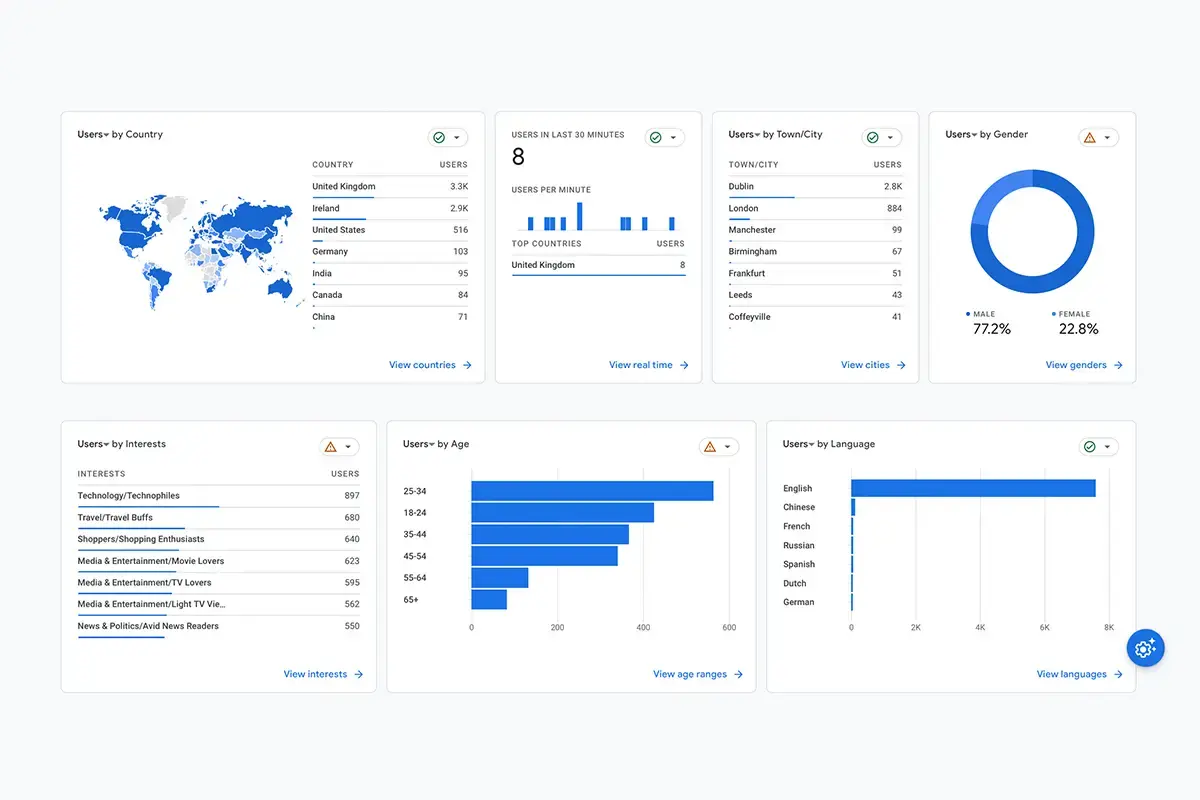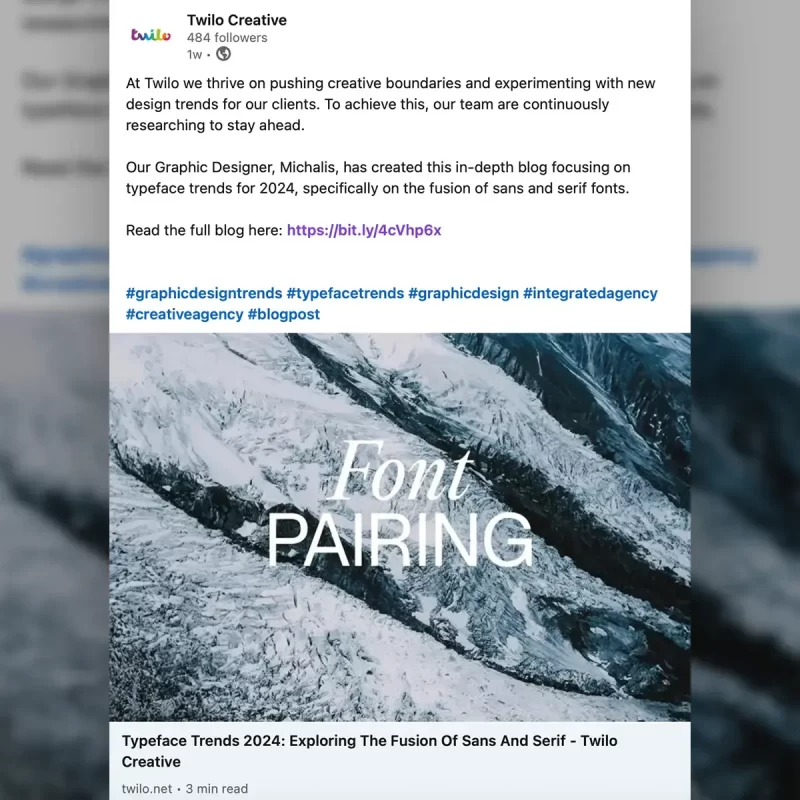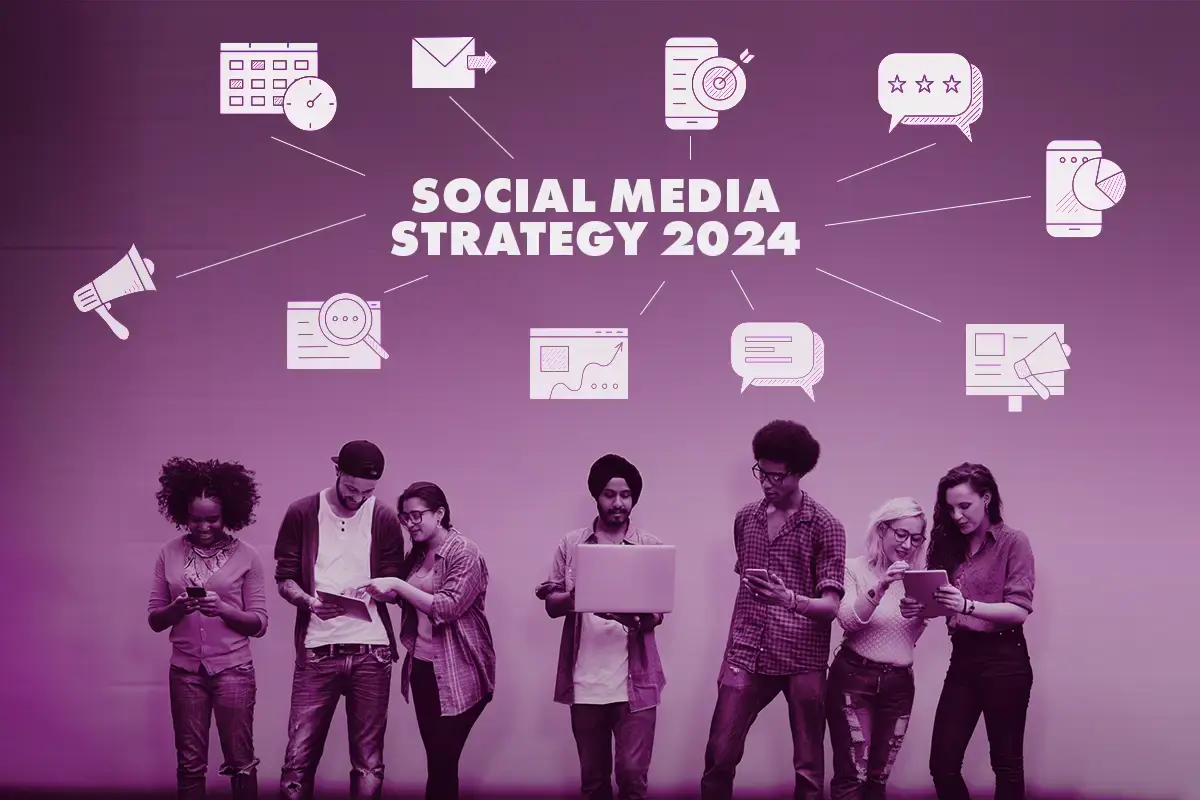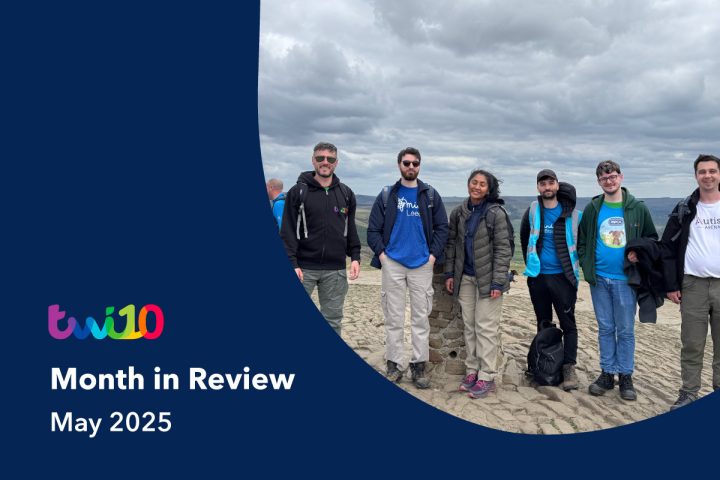Within this blog post, I will be explaining how to create the perfect social media strategy for 2024 and outlining the best practices within the industry.
More specifically on how to set your goals, how to understand your audience, choosing the right platforms, how to share your message, and why content creation is so important.
Setting Your Goals
When it comes to setting your social media goals, you need to start by clarifying exactly what you’d like to achieve through your social media presence. Whether it’s to increase generic brand awareness, increase platform followers and/or engagement rates, or improve overall customer trust with your brand.
As social media is so responsive and forever evolving, it means you must be flexible, so it is essential to keep reviewing your goals to stay ahead of your competitors.
Brand Awareness
Brand awareness is a common goal set by brands when creating social media strategies. Due to your content being placed directly in front of customers, it increases the overall familiarity with your brand. This can then further encourage customer loyalty among current clientele or push customers to the buying stage.
Increase Followers
The more consistent content you create, the more loyal followers you’ll gain. I always recommend brands to create content calendars, so they can properly plan and make sure all posts are to the brands tone-of-voice and are consistent with the page. By using content calendars to stay consistent, it helps build relationships with your audience and establishes trust. But also gives you time to create reactive and engaging posts as you’ll have your main content already set.
Driving Traffic
We all know that people spend most of their time scrolling through social media, so it’s key to drive consumers from your social media platforms through to your website, and overtime turn them into leads, conversions, and revenue.
One of the easiest ways to direct people to your website, is by adding your website links into your content posts or via your bios. If you have an exciting blog post, or want to push a specific product, adding the link will directly send the consumer to view this.
Increase Trust
I’d say this is the most important goal to set and achieve. Consumers need to trust your brand before they make a purchase. With the current cost-of-living rising, and pockets tightening, consumers need convincing before they’ll buy into your product and brand.
The best way to gain trust with consumers on social media, is by nurturing interactions. Respond and react with people that are engaging with your posts, so they feel seen and important.
Understanding Your Audience
As a marketer, it’s great to reach lots of different audiences, and receive high engagement rates on posts, but if it’s not the right audience type, it will take them longer to convert into customers (if at all).
One thing I highly recommend is utilising Google Analytics and in-platform statistics, to show you the breakdown of each demographic segmentation: location, age, gender, income, education, just to name a few. This way you can clearly identify which audience you need to target and what type of content needs to be created.

Your audience plays a huge part in the overall marketing strategy as this will determine which platforms you should be using and the tone-of-voice you should adapt to. For example, if your product is targeted towards women and men in their 20’s/30’s, this group will be happier to have a friendlier tone, however men in their 40’s might prefer a more professional tone-of-voice via communications. By achieving the correct tone-of-voice, it increases the likelihood of engagement with your posts.
Remember, you might not be your brands target audience, so change your mindset and think like them!
Choosing Your Platforms
Once you have identified your core audiences, this is when you’ll start to look at which social media platforms to focus on.
It is most likely that people in their 20’s or 30’s are on Instagram/YouTube or TikTok, where they’ll focus on highly engaging and easy to watch content. This generation want to find the answers to their questions quickly, and how they can get the information ‘now’. So, creating content that provides straight-forward answers is very important in keeping them engaged. An example of this could be a 30 second Instagram Reel of the ‘Top 3 Benefits of X product’.

People in their 40’s are more likely to be on Facebook or LinkedIn. They could be half-way through their careers and have more time to spend reading articles across social media platforms. Meaning content can be longer and provide further information instead of quick snippets.
Sharing Your Message
Your overall message should be created around your business goals, unique selling points (USPs), and any additional features you want to share with your audience. There are several ways in which you can share your message across social media, including the below:
Testimonials / Reviews
If one of your goals is to increase trust, the best way to achieve this is through customer testimonials/reviews that can be taken directly from Google. Reviews show prospecting customers that you can fulfil your promise and you can do the specific job in question / provide a great product.
User-generated content
User-generated content is great in sharing your message across audiences. Due to it being someone else’s perspective it can build great trust with prospecting customers, as they can see that someone else has used this.
User-generated content can be either image-based or video content that an external stakeholder has created. It can be as simple as someone talking about their positive experience with your business, and how your services have benefitted them.
Long Form Content
Most of the time long form content is either blogs or articles that have been uploaded onto your website, and then later shared to your social media pages. An example of long form content is taking the blog URL and pasting it into your LinkedIn post. You can then write a caption about the post, and once posted people can follow the link through to your website to read more. Increasing your web traffic too.
Long form content is great for brands to discuss interesting topics within their specific industries, and by posting it on social media it gives the audience opportunities to comment and get involved with the conversation, increasing your engagement rates.

Video Content
This is essential for those ‘thumb-stopping’ moments as it makes people stop scrolling to watch your video. On TikTok it is so easy for the user to get lost in your videos (in a good way) as you can grab the user’s attention from one good hook, and they’ll click onto your profile to review other videos for tips and advice.
Videos provide personality for your brand and a contact, so customers feel like they ‘know’ the brand before interacting.
As a tip, to enable you to share your message effectively, I’d recommend creating a content calendar for the full month where you can start placing your content in for each day/ week etc. This will provide you with an overview for the month, meaning you’ll be more proactive.
Content Creation
By frequently creating new and exciting content, it builds up a portfolio that defines your brand, and increases your brand recognition. Canva templates are great for businesses that do not have in-house Graphic Designers, but want to create high-quality, on-brand content.
High-quality imagery and videography are essential in making your brand look professional. You don’t want pixelated images as it could lead to customers scrolling past your posts/ unfollowing your brand as you look un-trustworthy.
Conclusion
As most customers engage with brands online, specifically on social media, it is essential that brands are highly reactive and create tailored plans to target the correct audiences and hit those key KPIs.




